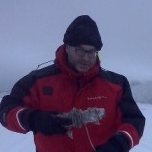Advancing the Monitoring and Modelling of Freshwater Systems with New Remote Sensing Technologies
A special issue of Water (ISSN 2073-4441). This special issue belongs to the section "New Sensors, New Technologies and Machine Learning in Water Sciences".
Deadline for manuscript submissions: 20 December 2024 | Viewed by 2019
Special Issue Editors
Interests: surface water quality modelling; ice-jam flood hazard mapping; ice-jam flood risk assessment; remote sensing of river ice covers; river ice hydraulic modelling
Special Issues, Collections and Topics in MDPI journals
Interests: fluvial mixing processes; eco-hydraulics (fish passage); remote sensing techniques (large-scale particle image velocimetry, particle tracking velocimetry, photogrammetric bathymetry reconstruction); 3D high-speed object tracking; coding research tools
Special Issue Information
Dear Colleagues,
As Guest Editors of the Special Issue “Advancing the Monitoring and Modelling of Freshwater Systems with New Remote Sensing Technologies”, we welcome you to submit an article highlighting new methodologies and techniques in remote sensing for the advancement of monitoring and modelling river, lake and groundwater systems. Technologies may include space-borne, airborne and near-ground remote sensing platforms to aid in a wide range of river and lake monitoring and modelling applications. The scope of these applications can include, to name but a few, aquatic ecology, habitat, water quality, sediment transport, geomorphology, flood forecasting and ice detection and characterization. It is hoped that these papers will also promote the exchange of new ideas and forge new collaborations between researchers, academics, engineers and government officials interfacing in the fields of remote sensing and freshwater systems.
Prof. Dr. Karl-Erich Lindenschmidt
Dr. Jason Duguay
Guest Editors
Manuscript Submission Information
Manuscripts should be submitted online at www.mdpi.com by registering and logging in to this website. Once you are registered, click here to go to the submission form. Manuscripts can be submitted until the deadline. All submissions that pass pre-check are peer-reviewed. Accepted papers will be published continuously in the journal (as soon as accepted) and will be listed together on the special issue website. Research articles, review articles as well as short communications are invited. For planned papers, a title and short abstract (about 100 words) can be sent to the Editorial Office for announcement on this website.
Submitted manuscripts should not have been published previously, nor be under consideration for publication elsewhere (except conference proceedings papers). All manuscripts are thoroughly refereed through a single-blind peer-review process. A guide for authors and other relevant information for submission of manuscripts is available on the Instructions for Authors page. Water is an international peer-reviewed open access semimonthly journal published by MDPI.
Please visit the Instructions for Authors page before submitting a manuscript. The Article Processing Charge (APC) for publication in this open access journal is 2600 CHF (Swiss Francs). Submitted papers should be well formatted and use good English. Authors may use MDPI's English editing service prior to publication or during author revisions.
Keywords
- airborne remote sensing
- flood forecasting
- fluvial geomorphology
- ice detection
- ice characterization
- near-ground remote sensing
- river and lake modelling
- river and lake monitoring
- sediment transport
- space-borne remote sensing
- water quality






